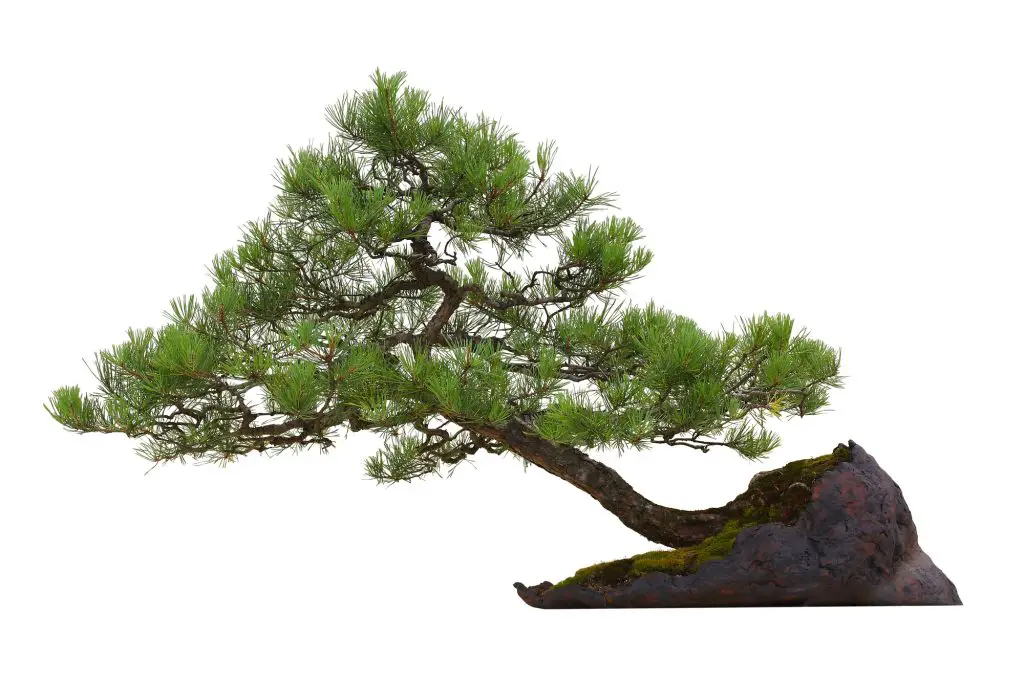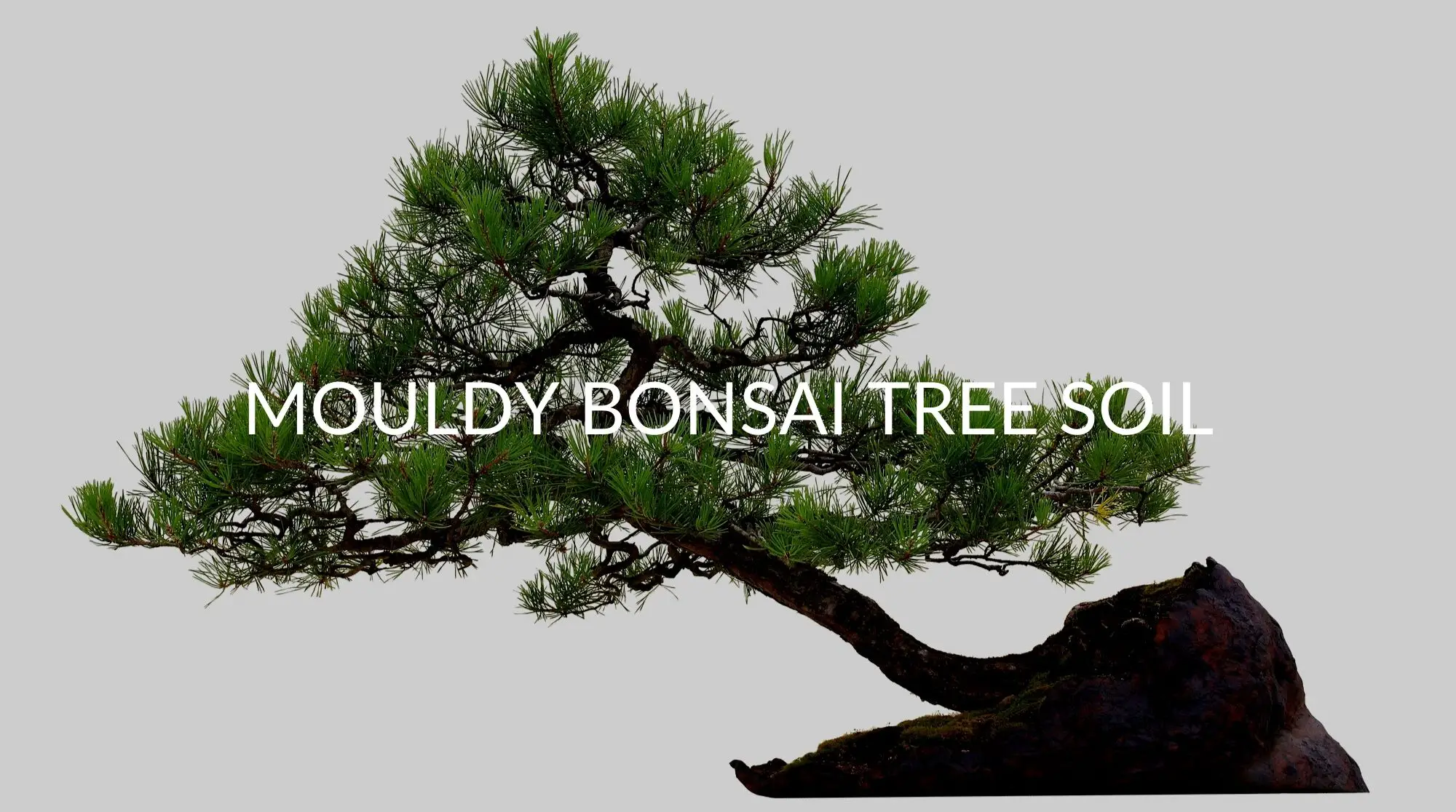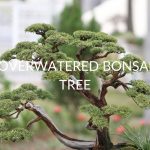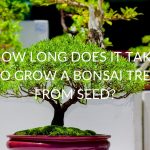The most common reason for mold on Bonsai tree soil is overwatering. If you do not let the soil dry adequately, conditions might be right for mold to grow. Mold may also be caused by too much debris building up on the surface of the soil, poor ventilation, inadequate light, or too much misting.
You work hard to create the style of your Bonsai tree and keep its foliage looking healthy and beautiful. But what happens when you start to notice mold or fungus growth on the surface of your soil? In many cases, it may not harm the tree, but it still doesn’t look good. In severe cases, it may cause damage to your tree.
Often, mold or fungus will grow on trees that are not growing in optimal conditions, weakening the immune system of the tree. Fixing the mold problem may help your tree thrive in any number of ways. Make sure you address the mold problem right away, so conditions do not worsen.
Read on for more information about mold on Bonsai and what to do about it.
What Is The Mold On The Soil Of My Bonsai?
White Fungus on Bonsai Soil
The most common growth or mold found on Bonsai soil looks like a white deposit growing over the top of the soil. In many cases, this is a mild fungal infection that grows when the soil does not dry adequately.
White deposits may also be caused by mildew. Make sure your soil is drying out adequately, stop misting your tree, and get ready to repot.
Algae on Soil
If you are using stored rainwater to water your Bonsai, there may be algae in the water. This might cause growth in the soil of your plant. Try using tap water or distilled water to see if the algae go away.
Calcium Deposits on Soil
White powder may also be caused by calcium deposits from your water. Switch to rainwater and distilled water and see if the white deposits go away.

Why Is There Mold On The Soil Of My Bonsai?
Overwatering
The first thing to consider if you discover mold on your Bonsai soil is whether you are overwatering your tree. Mold and fungus almost always grow in conditions that are too moist.
Make sure the top centimeter to an inch of your soil is completely dry before you water your tree again. Always soak your tree thoroughly and let it drain each time you water.
If you are misting your tree (such as an indoor Ficus), discontinue misting until you get the mold or fungus under control.
Fertilizing
Some fertilizers can cause deposits that look like mold. If it is the growing season and you are fertilizing your tree and notice mold, discontinue the fertilizer and see if the condition improves.
You may need to change to a different fertilizer.
Root Rot
If you have been overwatering, or your tree has been sitting in water, its roots may have become damaged over time. Damaged roots will not be able to absorb excess water, and they will begin to rot. When root rot begins, it creates conditions for the development of mold and fungus.
Poor Soil
Make sure your tree is growing in Bonsai soil. Bonsai soil is coarse and sandy and will allow adequate drainage. If the soil is not draining, or if it is old and deprived of nutrients, your tree will not be able to get the water and nutrition it needs, and the soil will not look healthy. You may notice mold begin to grow.
Inadequate Ventilation or Sunlight
You may want to increase airflow around your tree. You can do this with a simple fan, but you don’t need to aim it directly at the tree. Just try to increase the amount of airflow in the room or area of your plant.
Some trees will develop mold if they are not receiving enough light. Many Bonsai species require bright light or sun. If you have an evergreen or deciduous tree, it will grow best outdoors or in a greenhouse.
How To Get Rid Of Mold On The Soil Of Your Bonsai
Scrape Off Moldy Soil
If the infection is not severe, you may be able to gently brush or scrape off the soil. This will allow you to monitor your tree and see if the mold comes back. If it does, you will need to change something about the conditions of your tree–probably make sure you aren’t overwatering.
You can remove the top layer of soil and sprinkle new soil over the roots. Make sure you dispose of or disinfect any tools you use to do this before touching other trees or other parts of your tree.
Make sure you also remove any foliage that has mold or fungus.
It’s a good idea to keep your tree away from other plants if it has mold or fungus.
Repot Your Tree
Your tree may have been infected with mold or fungus even before you got it. In this case, you will need to repot the tree in new soil.
Trees growing in fresh soil will also have better natural defenses against mold and fungus. If you haven’t repotted your tree in 2-3 years, it is probably time.
Check for root rot. Pull out the tree and trim any roots that are black, brown, squishy, or smelly. Healthy roots should look white and firm. You will need to make sure you use disinfected scissors or shears and clean them after you trim.
Try a New Location
Sometimes trees develop mold because airflow is restricted, and the soil cannot dry. You can try moving your plant to a new location, but make sure it will receive adequate light. If you have an indoor Bonsai, mold may develop in the cooler months when the windows are closed. In this case, you may need a fan to improve airflow.
In addition, make sure your plant is getting adequate light. A plant growing in low light will be more susceptible to disease and pests and may eventually die.
Treat with Fungicide
If you cannot remove the mold or fungus and you have changed the location and airflow, you may need to try a fungicide.
Fungicide may be applied directly to the tree and the soil, or it may come in sticks that are placed in the soil.
Some Bonsai growers use over-the-counter insecticides, though household remedies are also available. Ask at a garden center about the best fungicide for your species of tree.
Move Away From Other Plants
Your tree may be getting infected by other infected plants. It may also put other trees or plants at risk if it is infected. Make sure you isolate any infected plant as much as possible but make sure it still receives adequate light, ventilation, and warmth.
How To Prevent Mold On The Soil Of Your Bonsai
Know How To Water Your Bonsai
Soak your Bonsai when the soil is dry up to a centimeter from the top. Soak the tree fully so water runs out of the drainage holes, but make sure it can dry completely. Pull your tree out of the pot occasionally if you can and check the roots. They should not look waterlogged.
Make sure that water is soaking the entire root system, however, and not just running around the sides of the soil.
Grow Your Bonsai in the Right Conditions
Each species requires different growing conditions. Generally, if a tree is kept in optimal conditions, it will be able to fight off pests and diseases naturally. If you don’t know your tree species, you can find information here.
Use Good Soil
Make sure you are growing your tree in soil appropriate for its species, and use fresh soil when you can. If you haven’t repotted your tree since you bought it, it may be time to consider if it needs new soil.
Ask at a garden center for premixed Bonsai soil, or check out this website. It is imperative that soil has adequate drainage.
Keep The Soil Free of Debris
Even if you are not overwatering your tree, the soil may not be drying fully if it is covered with debris that traps moisture. Make sure you clear away any leaves, dry bark, wood chips, fruit, or anything covering the soil that may trap water and cause damp soil. You want a situation where the soil is fully aerated.
Repot Your Tree Regularly
Repotting your tree will allow it to benefit from fresh soil and will keep the roots from getting compacted in the pot.
If you have mold problems in your house, make sure you sanitize pots and tools when repotting so you don’t contaminate the tree.
Apply a Suitable Fertilizer
Bonsai trees do well with some fertilizer applied in the growing season only. Make sure you get a fertilizer that your tree can tolerate. If you think fertilizer is contributing to mold growth or other deposits, discontinue use and try a different fertilizer after the tree has recovered.
Bonsai Tree Soil Requirements
Adequate Drainage
Bonsai soil must allow water to run through and drain from your pot, especially since Bonsai trees are watered by soaking the entire pot and root system of the tree. If soil does not have adequate drainage, the tree’s roots will rot.
Water Retention
However, drainage isn’t everything. The soil must also retain enough water so that the tree is nourished and doesn’t get overly dry.
Aeration
Aeration is the amount of air that is trapped inside the soil in tiny air pockets. Air pockets provide oxygen to a tree and allow the soil to provide nutrients supplied by mycorrhizae and bacteria. Soil that isn’t aerated will be too dense, and the tree will not get the nutrients it needs. This may lead to mold.
Mixture of Organic and Inorganic Materials in Bonsai Soil
Bonsai soil contains organic matter, such as leaves and bark. Inorganic components do not retain moisture and include substances such as rock, grit, and sand.
Bonsai soil must include both organic and inorganic components. The organic components will help the tree get the nutrients and moisture it needs, and the inorganic components will allow for drainage and aeration, which is crucial to the health of your Bonsai roots.
If you are growing your tree in solely organic soil, over time, the material will compact so much that water cannot flow in or out. You may notice that you are watering your tree, but no water is actually soaking into the soil to the roots. This is because organic matter has become too compacted.
Good Bonsai soil contains materials such as Pumice, Lava Rock, and Akadema clay.
What is the Right Soil for My Bonsai?
The correct mix of soil for your tree depends on its species and the conditions it is growing in. In very humid conditions, you will want to make sure your soil has adequate drainage. In very dry conditions, you may need additional organic material.
Keep in mind that soil with a higher percentage of organic material may not need to be watered as often.
Trees that cannot tolerate sitting in damp soil will need excellent aeration and drainage. This includes many evergreen varieties. Deciduous trees often prefer soil with slightly more clay or organic matter.
FAQ
How Do You Treat A Fungal Infection On A Bonsai Tree?
Move the tree away from other plants immediately, so the fungus doesn’t spread. Remove all the affected areas of the plant with sharp, clean shears or scissors. This includes foliage and any branches or bark. Use a fungicide that is recommended for your species of tree.
If you can, repot your tree in fresh soil and make sure you sanitize the pot or use a new pot.
Recap
Many mold issues on Bonsai don’t kill the trees if they are identified and remedied early, so don’t delay if you notice mold or fungus. It may take








